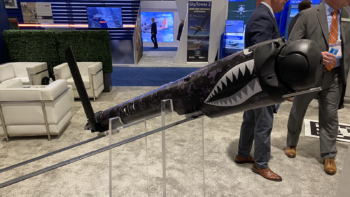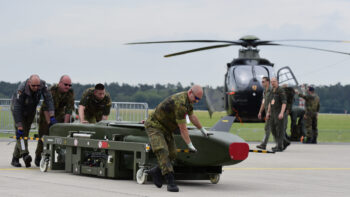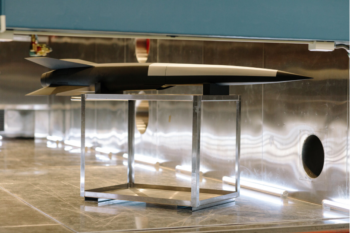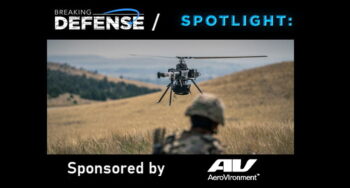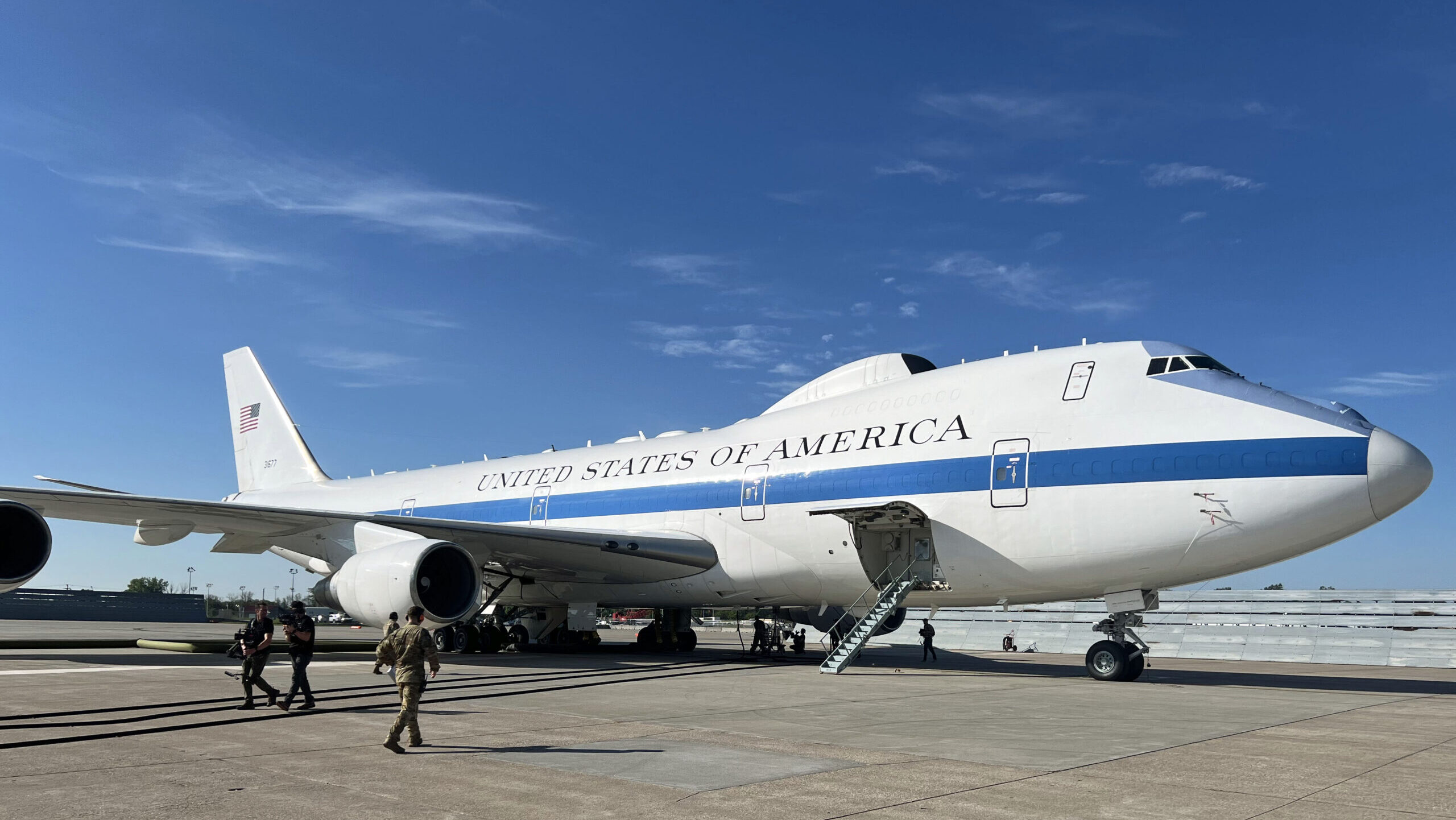
595th Aircraft Maintenance Squadron maintainers prepare the E-4B for flight as a visiting documentary production team loads onto the Nightwatch to film a local training sortie and air refueling mission from Offutt Air Force Base, Neb., May 15, 2024. (US Air Force photo)
WASHINGTON — Sierra Nevada Corporation’s behemoth task of converting Boeing 747 jumbo jets into militarized aircraft that can survive nuclear war will be no easy feat, but the mid-size, privately-held firm hopes that a set of special digital tools will ease the process.
SNC, which won the Air Force’s Survivable Airborne Operations Center (SAOC) contract late last month, plans to make a near-“digital twin” of the aircraft through a years-long design phase.
“We are approaching this as a fully digital program,” Brady Hauboldt, SNC’s vice president of aviation strategic plans and programs, said in a recent interview with Breaking Defense. “We not only are building out digital models, but as you collect a series of digital models, you essentially become a digital twin of the aircraft.”
For the SAOC program — a replacement for the Air Force’s aging E-4B Nightwatch fleet that typically transports the Defense Secretary but can also serve as a mobile nuclear command and control outpost, earning it the moniker “Doomsday plane” — SNC will need to learn a great deal about the 747 to mitigate risks for the SAOC’s development, considering the company isn’t the jet’s original manufacturer. Now that SNC has made a deal to acquire five 747-8is from Korean Air, that work is expected to begin shortly.
“When you’re not the OEM [original equipment manufacturer], you take a different approach … for the modification, because you want to avoid touching any of the critical flight controls or the OEM’s intellectual property, their software and so on,” Hauboldt said. Instead, he said SNC’s solution consists of a “very light touch on the green aircraft to create a separation, if you will, between a really great airplane that Boeing has been building for a long time and the mission systems modifications that will be done under the SAOC program.”
Part of that process will be extensively instrumenting the aircraft, undergoing steps like digital scans to build out a computerized model. Hauboldt clarified SNC isn’t out to entirely reproduce the 747, though the company plans to construct “a complete digital representation of the modified SAOC weapon system. And it will be a digital thread” throughout the modification process that is delivered to the Air Force, he said.
All of the aircraft work will be done at Dayton International Airport, according to Hauboldt, where SNC has made significant investments to open hangars that will eventually house other company programs as well. SNC is also growing in the Denver, Colo., and Dallas, Texas, areas following the $13 billion SAOC award, Hauboldt said.
But there will be other players involved too, including the company’s “big six” teammates revealed last week: Collins Aerospace, FSI Defense, GE Aerospace, Greenpoint Technologies, Lockheed Martin Skunk Works, and Rolls-Royce.
“We very deliberately partnered with some like-minded and domain experts across the defense industry to help fill in where we perhaps didn’t have the knowledge or depth that some of these companies did,” Hauboldt said, adding that the teammates have been involved for more than three years.
SNC has now “submitted several of our first deliverables to the US government,” according to Hauboldt, and has kicked off efforts to establish a program baseline. The company is now staffing up to support preliminary and critical design reviews developed “over the next few years,” eventually culminating in aircraft modification.
According to Aviation Week, a final SAOC fleet size could be anywhere from eight to 10 aircraft. Hauboldt stated the final fleet is still under discussion, but noted SNC has acquired the aircraft necessary to support the engineering and manufacturing development phase and stands ready to buy as many aircraft as needed for the program.
SNC’s victory over Boeing for SAOC reportedly came down, in part, to Boeing’s disagreements over data rights with the Air Force. Asked about SNC’s pitch for the contract, Hauboldt said the firm “recognized very early on that something very important to the Air Force was the ability to have data rights to support future sustainment and modification of the aircraft,” and that “what we have done is assured the Air Force that everything we produce under the contract becomes their data.”
That doesn’t mean SNC can give away others’ intellectual property, Hauboldt emphasized. “But the volume of digital data generated under this contract will assuredly give great value to the US Air Force for decades when it comes to sustaining and modifying this weapon system throughout its lifecycle.”
Militarizing one of the largest passenger jets ever built means SNC may encounter some surprises, with Hauboldt using the example of discovering a bulkhead in an unexpected location. Still, he said the 747’s immense size can be a relative advantage in some cases, since smaller jets have less margin for growth concerning space, weight and power.
While being a fixed-price program with its own unique requirements, Boeing’s high-profile struggles on the VC-25B Air Force One replacement effort — which is modifying two 747-8i aircraft to transport the US president — may be something of a cautionary tale for SNC, whose SAOC work will likely involve some similar tasks. Without commenting directly on Boeing’s woes, Hauboldt said SNC has taken steps to mitigate risks early on.
“No large program is without its challenges. I wouldn’t go so far as to say we won’t have our challenges,” he said. “But we are ready and [have] very active communications with the customer to ensure that those types of challenges don’t manifest themselves on SAOC like they have on others.”
Army picks Red Cat’s small quadcopter for 2nd Short-Range Reconnaissance tranche
The service and company are expected to ink a deal by the end of the year.






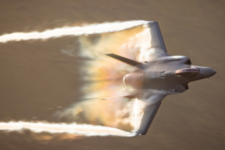


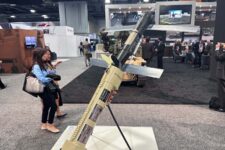
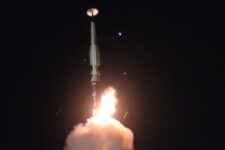


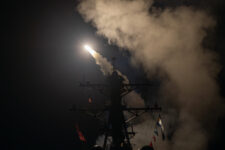
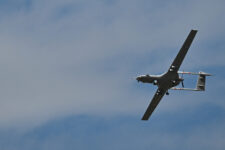


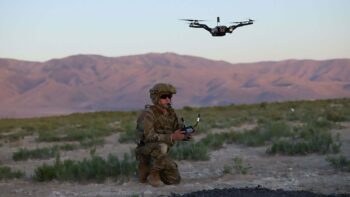
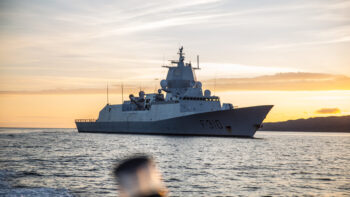
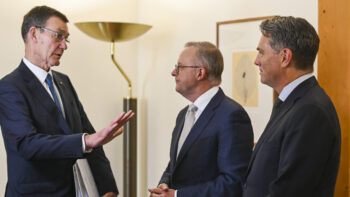

![E-2D_AR_1[1]](https://breakingdefense.com/wp-content/uploads/sites/3/2024/10/E-2D_AR_11-350x233.png)
